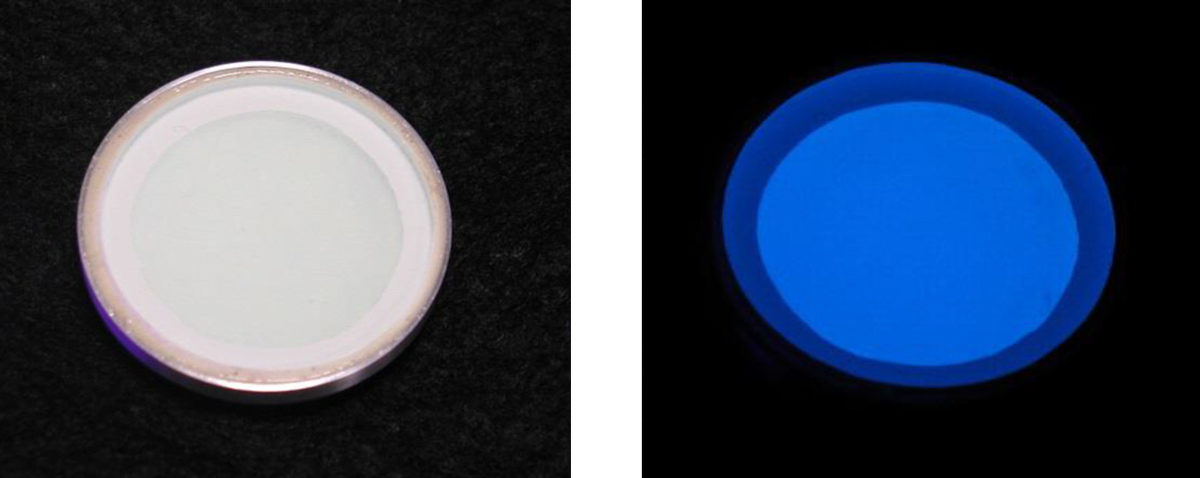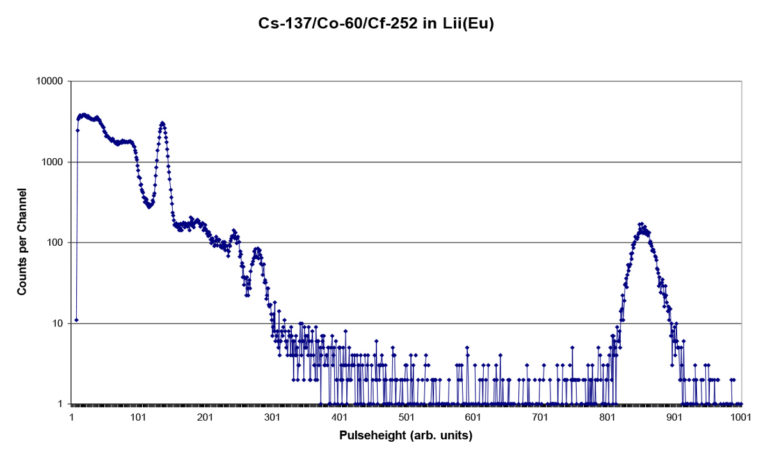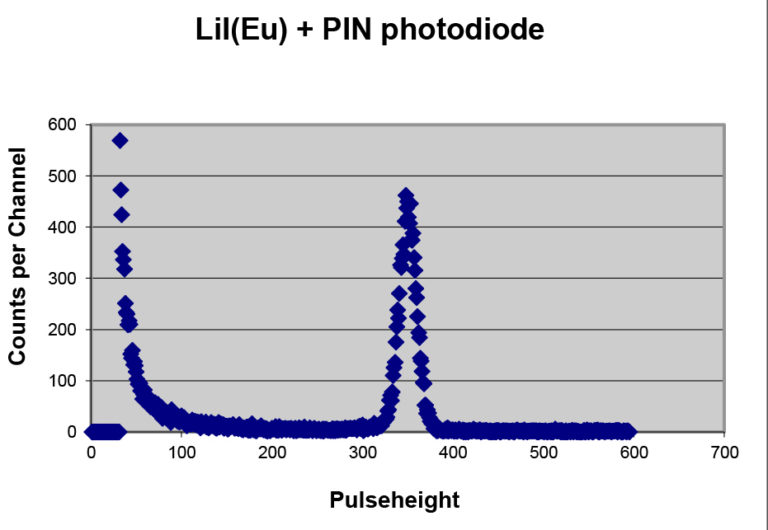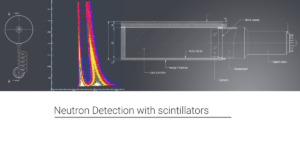6LiI(Eu)
Thermal neutron scintillation detectors
As lithium-containing gas is not available, scintillation detectors are common as lithium-based neutron detectors. LiI is chemically similar to NaI, and therefore its scintillation performance is reasonably good. As an activator for LiI, Eu is doped.
Neutrons do not produce ionization directly in scintillation crystals but can be detected through their interaction with the nuclei of a suitable element. In a 6 LiI(Eu) scintillation crystal, for example, neutrons interact with 6 Li nuclei to produce an alpha particle and a triton (tritium nucleus), which both produce scintillation light that can be detected. For this purpose, also enriched 6 Li-containing glasses can be used, doped with an activator.
The thickness of a LiI(Eu) crystal is good enough to fully stop the neutron interaction products (alpha particle and triton). Thus, each neutron interaction event can make a signal pulse height equivalent to 4.78 MeV. When a gamma-ray with similar energy makes an interaction of full-energy deposition, the resultant pulse height is the same as the pulse height of the neutron event.
- 3 mm Lil(Eu) stops 90% of thermal neutrons
- Rugged crystal (> 20 degrees C temperature change per hour allowed)
- Excellent neutron / gamma discrimination (neutron peak > 3.6 MeV)
- Neutron peak resolution < 7% FWHM (PMT readout)
Crystal in daylight and under UV light:






